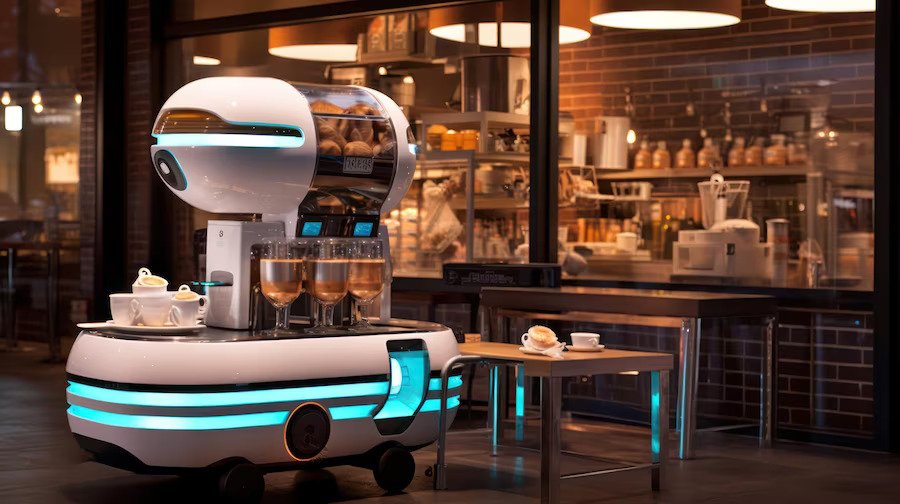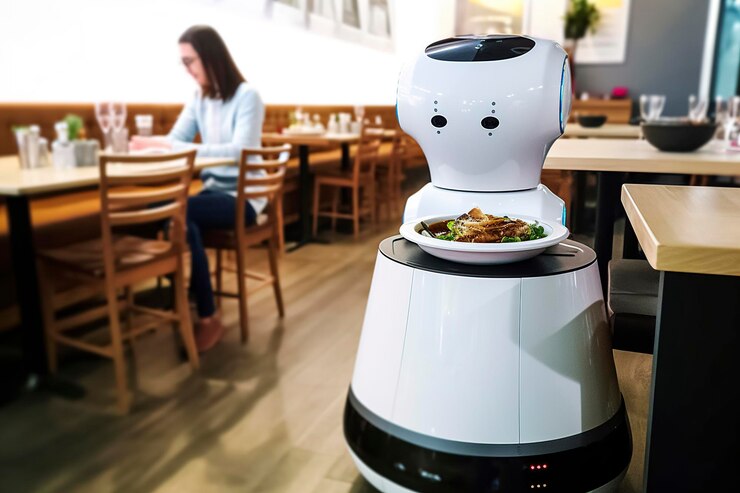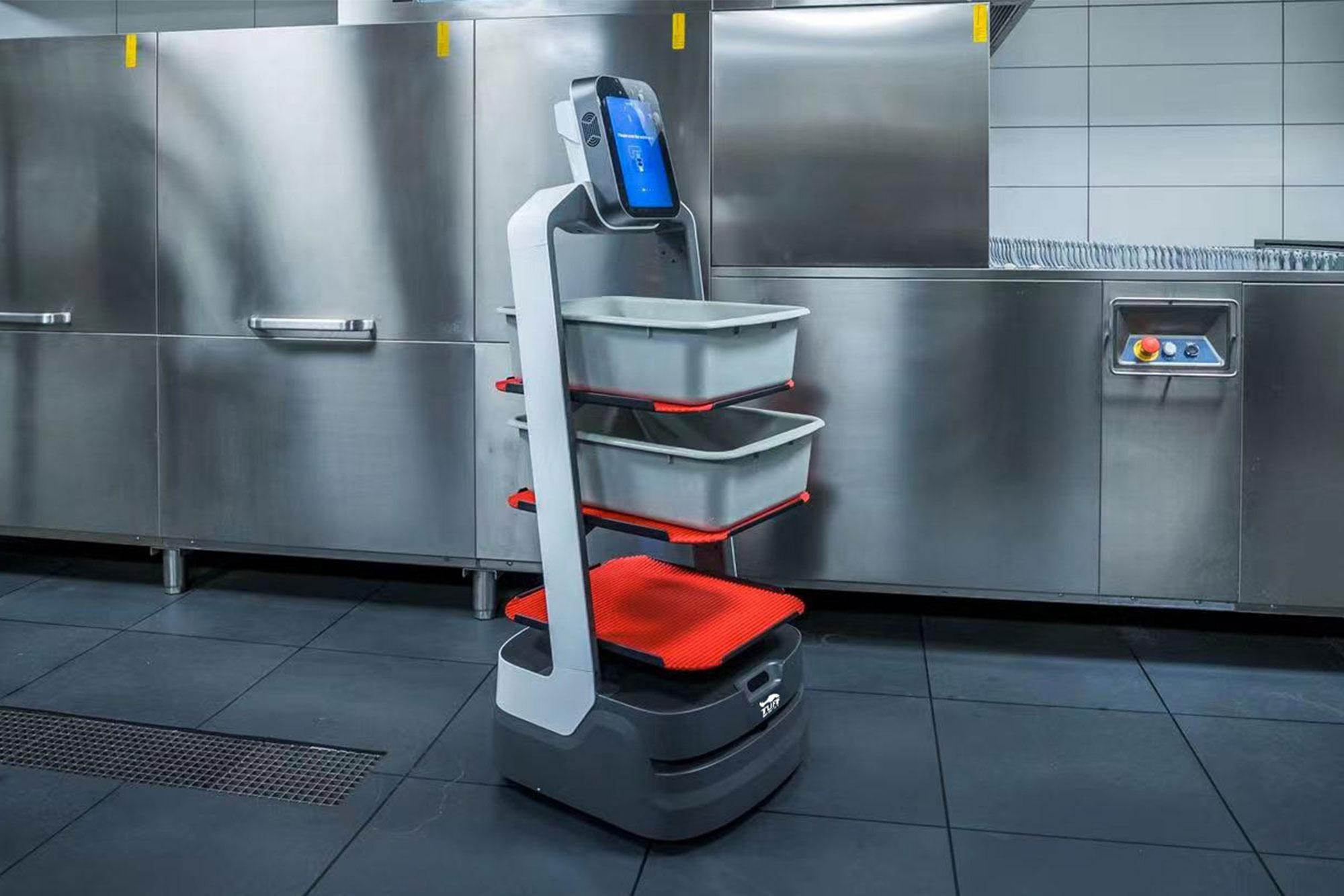The last few years have witnessed the rapid integration of automation, and no industry has been left behind, including the restaurant industry.
From online booking and reservations to automated inventory management, the landscape of dining establishments has been and continues to be revolutionized. Automation significantly reduces workload, increases productivity, and enhances the customer experience.
This article offers an in-depth exploration of automation in restaurants, its benefits, challenges, and how to best implement it, with a special focus on Tuff Robotics, one of the most celebrated restaurant automation solutions.
What Is An Automated Restaurant?
Dining establishments that adopt and integrate various technological devices and systems, such as Kitchen Display Systems (KDS) and Point Of Sales (POS) to reduce workload, boost productivity, and increase efficiency are known as robotic or “automated restaurants.” From sophisticated robotic chefs to software that automates certain processes, restaurant automation technology is becoming increasingly widespread.
Especially in an era of labor shortages, automation has helped many dining businesses to cut back on the number of employees needed and simultaneously simplify and optimize operations. This increasing demand for automation tools has compelled numerous robotic solutions providers, such as Tuff Robotics, to offer solutions particularly tailored to the restaurant industry.
Tracking Effectiveness And Identifying Challenges

One of the main advantages of restaurant automation is that it allows efficient tracking and assessment of its performance. Through real-time monitoring and the use of data analytics, the success of automation initiatives can be gauged, pinpointing areas of excellence and highlighting opportunities for improvement.
This greatly minimizes the chances of error, significantly speeding up, streamlining, and optimizing operations, offering restaurant proprietors and customers an enhanced experience — a win-win situation for both.
Determine How And Where Automation Can Help In Your Restaurant
Before you automate your restaurant, you must carefully and thoroughly analyze your business operations accurately, pinpointing areas that automation can greatly improve — this can include reducing customer wait times, using software to book reservations, or improving inventory management.
Explore The Urgent Automation Priorities
When formulating your automation strategy, it is crucial that you first focus on those areas that need your urgent attention, and this will be specific to your business. For instance, if you’re a popular diner with lots of daily customers, you can opt for robotic fleets that can carry up to 3 large trays of food at the same time and accurately deliver it to your customers, thereby greatly increasing service capacity.
You must look at your restaurant’s key performance indicators (KPIs) and sit down with your staff to come up with an effective restaurant automation plan.
The Advantages Of Fully Automated Dining Establishments
Automation in the restaurant industry is a relatively new trend, but why is there so much fuss about it? This is mainly due to the many benefits it offers owners and customers. Let’s explore how automation can help your dining establishment:
- Reduced Workload. It comes as no surprise that machines and software outperform humans when it comes to repetitive tasks. Delegating mundane yet crucial responsibilities to machines allows employees to engage in more important tasks.
- Enhanced Productivity. When employees are free to focus on more meaningful tasks, such as ensuring the quality of products and services and assisting customers, the workflow becomes more efficient and expeditious.
- Improved Customer Experience. Customers also want to optimize their time. A more efficient and swiftly moving queue can elevate the customer experience and even attract a larger pool of potential clients.
- Increased Revenues. Increased employee productivity and an enhanced customer experience stimulate greater business, foster growth, and boost your financial performance.
- Cost Savings. Automated systems can reduce labor costs and minimize errors, significantly reducing overall expenses.
In short, automation offers a range of advantages to restaurants. As this technology continues to develop, we can expect to see even more benefits for fully automated dining establishments.
Challenges Of Fully Automated Restaurants
While fully automated restaurants offer a host of enticing benefits, their journey toward complete automation is not without its unique set of challenges. These challenges, though surmountable, require careful consideration and strategic planning.
They include:
- High Initial Costs. Setting up a fully automated restaurant can be expensive. The cost of purchasing and maintaining automation equipment is a significant consideration. However, with the right strategic approach, the investment will pay off in the long run.
- Accessibility Consideration. Automation can alienate older or less tech-savvy customers, as some may struggle to adapt to these changes. For instance, using kiosks instead of cashiers can create more work for employees who must assist customers unfamiliar with the technology.
- Handling Complex Requests. Automated systems may struggle with complex customer requests. Customizing orders or making specific changes can be challenging without human interaction, making it harder to meet certain customer needs.
- Reduced Social Interaction. Automation in restaurants, such as ordering through apps or using kiosks, can reduce the social aspect of dining out. The absence of chefs and servers might make the restaurant feel less inviting, with experts concerned about its impact on human connection.
So, while the allure of fully automated restaurants is undeniably strong, they must navigate some noteworthy challenges along their journey to complete automation. Striking the right equilibrium between automation and human touch will be key to fully realizing the potential of automated restaurants in the ever-evolving landscape.
The Operational Efficiency Of Fully Automated Restaurants
Automation can be a valuable tool for restaurants that want to improve their operations and stay competitive. By automating repetitive tasks, reducing costs, improving quality, increasing flexibility, enhancing safety, and improving data collection, automation can help restaurants improve their bottom line and deliver a better experience for their customers.
Balancing Efficiency With The Human Touch
When it comes to restaurant automation, you must find the right balance between efficiency and human interaction. While automation can streamline processes, you must ensure that your customers still feel welcomed and valued. There will always be old-school customers who prefer a human waiter with a pen and notepad, and all would-be automated restaurant owners should consider these factors carefully.
Enhancing Restaurant Operations Through Automation

Beyond the front-of-house automation, restaurant owners can explore automation in various aspects of their operations, such as inventory management, scheduling, and even marketing. The scope of automation in restaurants is vast, providing plenty of opportunities to increase efficiency and enhance the dining experience for your customers.
For example, automation can help restaurants improve efficiency by automating repetitive tasks, such as food preparation, cooking, and cleaning. This can free up human employees to focus on other tasks, such as customer service, which should lead to improved customer satisfaction. Keep in mind that for many patrons, even the mere presence of robots in a restaurant would be reason enough to come and experience the future firsthand.
Exploring Labor Cost Reduction Through Restaurant Automation
Restaurant owners are keen on minimizing manual labor dependence to boost efficiency, and technology-driven automation provides a clear solution across various operational aspects. For instance, tablet ordering empowers customers to independently browse menus and place orders, streamlining order processing and reducing the need for extensive server staff, thus reducing labor costs.
Additionally, manual inventory tracking, prone to errors and theft-related losses, is replaced by a reliable restaurant POS system. This automation streamlines stock and inventory management, providing real-time data on inventory levels, movements, and reorder alerts.
That’s not all; smart restaurant POS systems offer insights into employee performance, analyzing sales, table service, and customer feedback. This data enables the recognition of high-performing staff and targeted training for underperforming employees, optimizing labor management.
These are just some of the ways that automation reduces labor costs.
Automation in restaurants is revolutionizing and reshaping the way we dine out. From improved efficiency to cost savings, the benefits are undeniable. However, striking the right balance between automation and maintaining the human touch is essential for a successful transition.
As technology continues to advance, with companies like Tuff Robotics leading the way, we can expect even more innovative solutions to enhance the restaurant industry and provide customers with memorable dining experiences.
Frequently Asked Questions
How Much Does a Restaurant Robot Cost?
This can vary widely depending on the robot’s capabilities and complexity. Basic robots for tasks like order taking may start at a few thousand dollars, while more sophisticated ones can be multiple times that.
Will Restaurants Be Fully Automated?
Even though there is a trend towards automation in restaurants, it’s unlikely that they will be fully automated in the near future. The human element, including chefs, servers, and the overall dining experience, will always play a crucial role alongside automation. Automation is not about replacing humans but about enhancing and optimizing operations.
Will Waiters Be Replaced By Robots?
While some routine tasks in restaurants may be automated, the role of waiters is unlikely to be entirely replaced by robots. Waiters provide a personal touch, offer recommendations, and create a connection with customers that automation cannot fully replicate. Besides, we must realize that not every customer will feel comfortable interacting with a machine. And for them, the restaurants should have waiters with a pen and notepad at the ready.
Read Also:




























